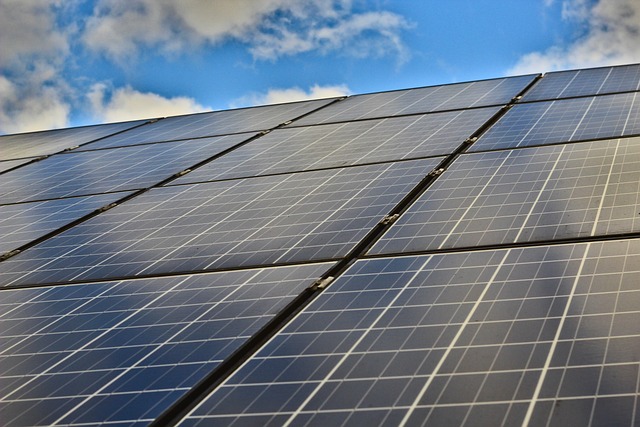2023 has seen substantial progress in solar power technology, with perovskite solar cells leading the charge due to their higher energy conversion rates and cost savings. These cells are more efficient and less expensive than traditional silicon panels, thanks to their flexible material properties that simplify manufacturing. Bifacial solar panels have also gained prominence for doubling the energy output by capturing sunlight from both sides. The sector is moving towards building-integrated photovoltaics (BIPV), where solar technology is seamlessly integrated into buildings, including roofing tiles and windows, making it a practical and unobtrusive part of urban infrastructure. Transparent solar cells are expanding the scope of solar applications, enabling their use in electronic devices, vehicles, and other products without disrupting their design. These advancements position solar power as a key player in meeting global renewable energy needs and promise to make it an everyday, sustainable energy solution. The future of solar energy is bright, with these innovations set to enhance its viability and efficiency, contributing to a more resilient and cleaner global energy landscape.
2023 heralds a new era in solar energy as innovations continue to propel the industry into uncharted territories of efficiency and sustainability. This article delves into the cutting-edge advancements that are set to redefine how we harness solar power, from the laboratory to the rooftops and beyond. We explore the potential of perovskite solar cells, bifacial solar panels, building-integrated photovoltaics, transparent solar technologies, and floating solar farms—each offering unique solutions to our growing energy demands. Additionally, we examine the transformative role of organic photovoltaics, graphene-based solar cells, nano-materials, 3D printing techniques, and energy storage integration. These innovations not only promise to enhance the efficiency and accessibility of solar power but also to integrate seamlessly into our daily lives. As we stand on the precipice of a solar-powered future, these developments are poised to make a profound impact on global energy landscapes.
- Advancements in Photovoltaic Technology: The Future of Solar Power
- – Perovskite Solar Cells: A Game Changer with Higher Efficiency and Lower Manufacturing Costs
Advancements in Photovoltaic Technology: The Future of Solar Power

The landscape of solar power is undergoing a transformative shift, propelled by advancements in photovoltaic technology. Innovations such as perovskite solar cells promise to enhance efficiency and reduce costs, potentially surpassing the performance of traditional silicon-based panels. These next-generation solar cells not only offer higher energy conversion rates but also are easier and less costly to manufacture, thanks to their versatile material properties. Additionally, bifacial solar panels are emerging as a game-changer, capable of capturing sunlight from both sides, thereby increasing energy yield significantly. Researchers are also exploring the integration of photovoltaic systems with building materials, leading to solar roofing tiles and windows that generate electricity while performing their traditional functions. The potential for building-integrated photovoltaics (BIPV) could make solar power a seamless and aesthetically pleasing addition to urban environments. Moreover, the advent of transparent solar cells paves the way for solar technology to be integrated into electronic devices, vehicles, and other consumer products without compromising their functionality or design. As these technologies mature, they hold the promise of making solar power a more accessible and efficient solution for renewable energy needs worldwide. The future of solar power is not just about harnessing the sun’s energy more effectively but also about integrating this technology into every aspect of our lives, heralding a new era where clean, sustainable energy becomes an integral part of our daily lives.
– Perovskite Solar Cells: A Game Changer with Higher Efficiency and Lower Manufacturing Costs

Perovskite solar cells represent a significant leap forward in the realm of renewable energy, offering a promising alternative to traditional silicon-based solar panels. These innovative cells boast remarkable efficiency levels, often exceeding those of their conventional counterparts, while also presenting opportunities for reduced manufacturing costs. The unique crystalline structure of perovskite materials enables them to absorb more sunlight across a broader spectrum, translating into higher energy conversion rates and greater power output. Moreover, the fabrication process for perovskite solar cells involves less energy-intensive methods and less expensive materials, potentially lowering the overall cost of production. As research progresses, these cells are expected to become even more efficient and affordable, making them an attractive option for widespread adoption in residential, commercial, and utility-scale solar installations. The advancement of perovskite solar technology is poised to enhance the integration of solar power into our energy mix, contributing to a more sustainable and resilient power grid. The implications of this technology extend beyond just energy generation; it’s a step towards a future where clean, abundant solar energy can be accessible and cost-effective for all.
In conclusion, the solar power sector is poised for significant advancements with the emergence of perovskite solar cells as a game-changing innovation. These cells promise higher efficiency rates and lower production costs compared to current photovoltaic technology, signaling a transformative shift in the landscape of renewable energy. As this technology continues to mature, it holds immense potential to democratize access to solar power globally, making clean, sustainable energy more accessible than ever before. The next horizon for solar panels is not just about efficiency but also affordability and scalability, ensuring that solar power remains a cornerstone of the global shift towards a greener, more sustainable future.
